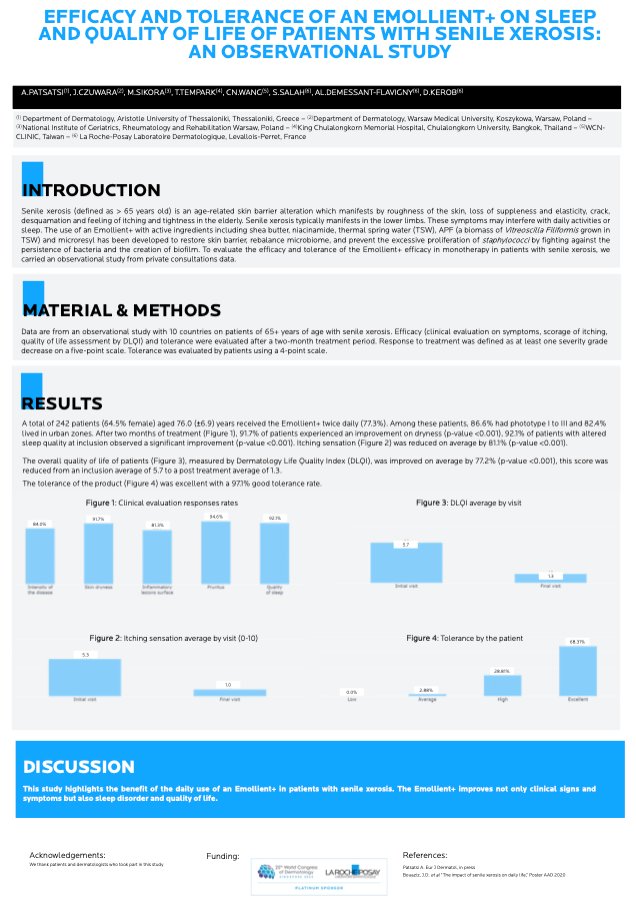
INTRODUCTION
Senile xerosis (defined as > 65 years old) is an age-related skin barrier alteration which manifests by roughness of the skin, loss of suppleness and elasticity, crack, desquamation and feeling of itching and tightness in the elderly. Senile xerosis typically manifests in the lower limbs. These symptoms may interfere with daily activities or sleep. The use of an Emollient+ with active ingredients including shea butter, niacinamide, thermal spring water (TSW), APF (a biomass of
Vitreoscilla Filiformis grown in TSW) and microresyl has been developed to restore skin barrier, rebalance microbiome, and prevent the excessive proliferation of
staphylococci by fighting against the persistence of bacteria and the creation of biofilm. To evaluate the efficacy and tolerance of the Emollient+ efficacy in monotherapy in patients with senile xerosis, we carried an observational study from private consultations data.









